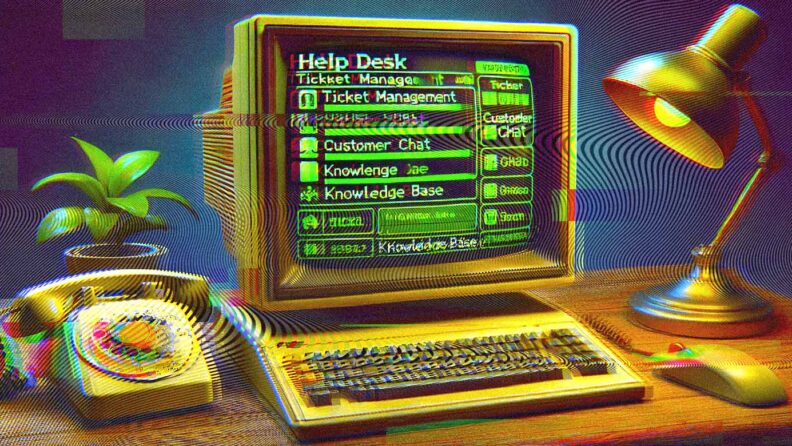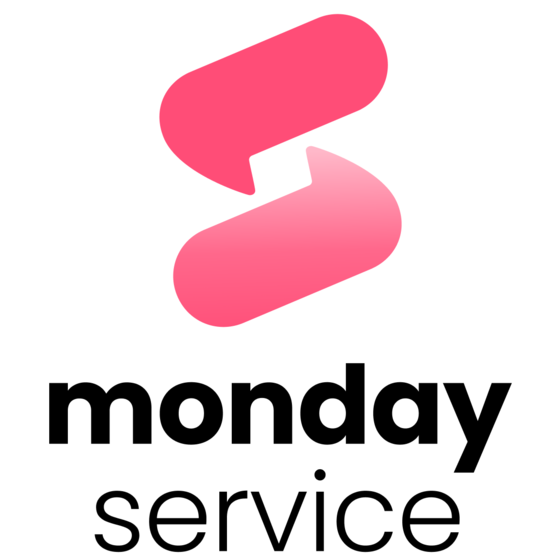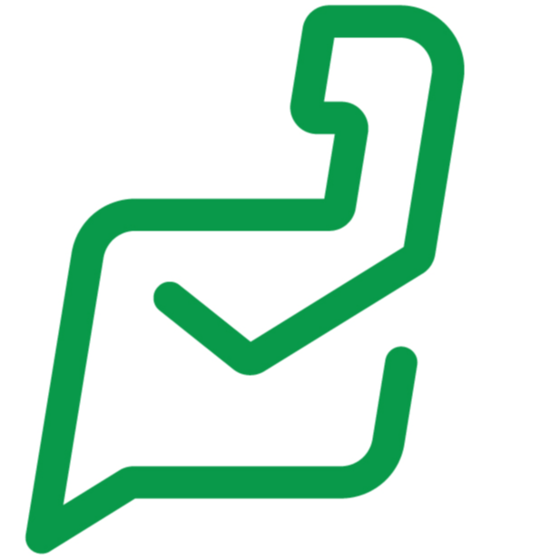Your IT support team needs the right tooling to help them do their best work, and help desk software is a fundamental piece of that toolkit. But there are so many options and different features and functions it can make your head spin.
To help you sift through the sea of solutions and find the right help desk software for your team, we’ve rounded up the top factors to consider—with a checklist summarizing each!
Choosing Help Desk Software: 11 Factors to Consider
Here are the most important considerations to take into account when you’re looking for the best help desk software to keep your IT operations running smoothly:
1. Your Team and Business Needs
Before diving into features and pricing, it’s important to understand your team’s needs. There are lots of benefits of help desk software, but you want to narrow down which ones you're after. What are the main functions of your IT help desk? What are your team’s biggest challenges? Are you struggling with ticket volume, inefficient workflows, or slow response times?
To figure this out, start by gathering input from all stakeholders—your IT support team, adjacent departments and leadership teams, and your end-users. Identify the specific challenges people are facing. For your IT service team, it could be managing multi-channel support requests, handling escalations, or dealing with inefficient support processes. For end users, it might be a lack of self-service options like a knowledge base or chatbot.
With a clear understanding of what’s causing friction, you’ll be better equipped to filter out help desk solutions that don’t align with your needs.
2. Essential Functionality
When evaluating help desk software, certain fundamental capabilities should be non-negotiable. These essential features form the backbone of an effective help desk system, ensuring your IT team can manage incoming service requests efficiently and provide a high-quality and consistent customer experience.
At a minimum, good help desk software should include the following functionalities:
- Ticketing System: Centralized management of support tickets, allowing for easy tracking, prioritization, and resolution.
- Automation: Tools to automate repetitive tasks like ticket routing and escalation, and notifications when tickets are assigned or statuses change.
- Knowledge Base: An internal database or asset management system with key information, support processes, and other tools to help your team resolve customer issues quickly and consistently.
- Multi-Channel Support: The ability to manage multiple communication channels, including email, phone, chat, and social media.
- Customizable Workflows: Flexibility to adapt the software to your team’s specific processes and service level agreements (SLAs).
Ensuring that your chosen help desk solution covers these basics will set a solid foundation for delivering exceptional IT support.
3. Key Features
Beyond the basics, you’ll also want to think about what specific help desk software features you’re looking for. While it’s tempting to be swayed by platforms boasting the latest and greatest, stay true to what will really make a difference for your IT team. For example:
- Advanced automation features could be most beneficial for teams dealing with complex workflows.
- Teams that need to monitor specific metrics to ensure adherence to SLAs might prioritize customizable dashboards.
- A platform that empowers end-users with self-service portals to host FAQs and other assets will be helpful for those with high ticket volumes.
- Teams working in highly regulated industries might opt for an on-premise rather than a cloud-based software solution.
- Collaboration tools could be particularly helpful for IT teams working cross-functionally.
Knowing what will have the greatest impact on your team helps you stay focused as you scan through those never-ending feature lists. Plus, you can narrow down if there’s a specific type of help desk software that would be the best fit for your team. Some might want enterprise help desk software, while others will seek out an IT service management (ITSM) platform.
4. Scalability and Flexibility
As your business grows, so do your tech needs. That’s why you’ll want to evaluate the scalability of a service desk solution and consider how it will meet your team’s evolving demands. Just as important as scalability is flexibility. If you have special requirements or unique processes underscoring your support operations, you’ll want a system that can uphold those norms.
Assess the pricing model and what the different plan tiers offer. Does the next tier-up add the additional functionality that would be most useful as your team scales? Does the vendor provide enough customer support to ensure smooth change management as your team learns how to use more advanced features?
As for flexibility, consider how much the platform can be customized. Are there options for custom tags, workflows, and ticket routing options? Can you personalize the user interface with your own brand colors and logos? Are there multiple content formats available to populate your help center?
These are all things worth considering, because you want to find a software solution that works for your team, and not the other way around.
5. User-Friendliness and Usability
Speaking of finding help desk software that works for your team, ease of use is another important element to assess in any help desk solution. Even if it has all the flashy features and every integration of your dreams, it won’t be the right tool for your team if it’s a pain to use.
Start by evaluating the software’s interface—Is it intuitive and easy to navigate? Can your support agents quickly access the tools they need, whether it’s managing tickets, viewing dashboards, or automating tasks? Look for features like customizable templates and widgets, drag-and-drop workflows, and clear, organized menus that reduce the learning curve.
You’ll also want to consider the availability of training resources and support documentation. Does the provider offer tutorials, user guides, or a knowledge base to help your team get up to speed? If the software includes a mobile app, ensure it’s user-friendly and offers the same level of functionality as the desktop version.
Your team’s user experience of a help desk tool is just as important as the end-user experience they’re able to provide by using it.
6. Customer Enablement and Support
Choosing help desk software is only half the battle—the real success comes from how well your team can adopt and leverage the platform over time. That’s where customer enablement and support from the software provider become crucial. High-quality training, resources, and ongoing support can make a significant difference in how smoothly your team transitions to the new system and how effectively they use it in the long run.
When evaluating vendors, look for comprehensive onboarding programs that include things like:
- Personalized onboarding and real-time training sessions
- Access to a robust self-service portal with FAQs, knowledge base, and tutorials
- Ongoing assistance through support channels like live chat, phone, or email
- Dedicated support from an assigned customer support representative
- Community forums or other forms of community-driven support
By prioritizing customer enablement and support, you’ll ensure your team has the tools and resources they need to maximize the value of your help desk software, leading to higher adoption rates and long-term success.
7. Integration Capabilities
Selecting help desk software that integrates with your existing tech stack is a must. A platform that doesn’t connect with your other tools can create information silos, leading to inefficiencies and missed opportunities. But a well-connected system can lead to a better end-to-end experience, and increased customer satisfaction.
Here are some integrations worth looking for:
- CRM: Sync customer data with tools like Salesforce or HubSpot to provide support agents with a complete view of customer interactions.
- Communication Tools: Compatibility with platforms like Slack, Microsoft Teams, or email to streamline communication between support agents and other team members.
- Project Management Software: Integrate with tools like Jira or Asana to connect support tasks with broader project workflows.
- Knowledge Management: Link your help desk with a knowledge base or document management system to provide easy access to resources.
- Social Media and Messaging Apps: Integrate with channels like Facebook, Twitter, and WhatsApp to manage support requests from various communication platforms.
Many providers also offer API access, allowing users to build their own integrations as needed. By choosing a help desk solution that integrates well with your existing software, you’ll enhance your team’s efficiency, improve collaboration, and provide a more cohesive customer experience.
8. Security and Compliance
For IT teams, security and compliance are non-negotiable when selecting help desk software. Your platform must not only safeguard sensitive data but also ensure that your operations comply with industry regulations and internal policies. This is particularly critical when managing service level agreements (SLAs) with end-users and adhering to regulatory standards.
Start by evaluating the software’s security features—does it offer encryption for data at rest and in transit? Does it support multi-factor authentication (MFA) to protect against unauthorized access? Look for tools that provide robust audit trails and user role management to maintain control over who can access and modify sensitive information.
Compliance capabilities are equally important. Ensure the software meets relevant regulatory standards like GDPR for handling customer data and SOC 2 for operational security. The ability to manage SLAs effectively is also key; your help desk tool should allow you to set, monitor, and report on SLAs to ensure compliance and accountability.
By prioritizing security and compliance, you not only protect your organization from risks but also build trust with your customers, ensuring that your help desk operations meet the highest standards of safety and reliability.
9. Pricing Models and Total Costs
When evaluating help desk software, understanding the pricing models and total costs is essential to making an informed decision. Most platforms offer tiered pricing structures, typically based on the number of users, features, and service levels. It’s important to assess whether the basic plan meets your needs or if you’ll require advanced features that come at a higher cost.
To give you a sense of the average pricing of these tools, here’s a chart of the starting costs of some of the most popular help desk software;
| Tool | Best For | Trial Info | Price | ||
|---|---|---|---|---|---|
| 1 | Best for tracking internal support requests | Free trial available | From $26/seat/month (3 seat minimum) | Website | |
| 2 | Best for AI-driven IT automation | 14-day free trial + free demo available | From $19/user/month (billed annually) | Website | |
| 3 | Best for AI-powered ticket automation | Free trial available | From $149/technician/month (billed annually) | Website | |
| 4 | Best for multi-channel communication | 30-day free trial | From $15/agent/month (billed annually) | Website | |
| 5 | Best for providing tailored assistance | 15-day free trial | From $7/user/month (billed annually) | Website | |
| 6 | Best for integrating different channels | 14-day free trial | From $49/user/month | Website | |
| 7 | Best for AI-powered chatbots | Free trial available | From $9/member/month | Website | |
| 8 | Best for intuitive ticket management | 14-day free trial + free plan available | From $15/user/month (billed annually) | Website | |
| 9 | Best for AI-driven customer support | 7-day free trial + free plan available | From $25/user/month | Website | |
| 10 | Best for knowledge base access | 30-day free trial | From $18/user/month | Website |
10. Customer Reviews and Testimonials
Customer reviews and testimonials are invaluable when assessing any new software solution. These insights provide a real-world perspective on how the software performs, beyond the marketing materials. By reading what current users have to say, you can gauge the software’s reliability, ease of use, and the quality of customer support received.
When reviewing testimonials, look for patterns in the feedback. Are there consistent complaints about certain features, such as poor integration capabilities or limited automation? Pay attention to how users describe their experiences with scalability, customization, and response times. Also, consider the context—are the reviewers from similar industries or company sizes as yours? This can give you a better idea of how the software will perform in your specific environment.
Be mindful of red flags like frequent mentions of downtime, slow customer support, or hidden costs. Negative reviews about critical issues like security breaches or failure to meet SLAs should also be taken seriously.
11. Trial and Evaluation Periods
Taking advantage of trial and evaluation periods is a smart move when choosing help desk software. Free trials, personalized demos, and freemium plans each offer unique benefits that can help you make a more informed decision.
- A free trial allows your team to explore the software’s functionality in a real-world setting. You can test key features like ticket management, automation, and integrations, giving you a hands-on understanding of how the software will fit into your workflows.
- A personalized demo offers the chance to see the software in action, tailored to your specific business needs. It’s an opportunity to ask detailed questions and explore how the solution can address your unique challenges.
- Finally, freemium plans give you ongoing access to a limited version of the software. This can be especially useful for small businesses or teams that want to start with basic features and gradually scale up as their needs grow.
By leveraging these evaluation opportunities, you gain a clearer picture of which help desk software is the right fit for your team before making a commitment.
Help Desk Software Pre-Purchase Checklist
Okay, that was a lot of information! Looking for the TL;DR? Use this checklist to evaluate different help desk solutions against your team’s needs:
| Criteria | How to Evaluate |
| Team and Business Needs | What challenges are you trying to solve? What are your goals? Identify pain points and align them with business objectives before evaluating options. |
| Essential Functionality | Does the software offer the core features like ticketing, automation, and multi-channel support? Ensure these basics meet your team’s day-to-day needs. |
| Key Features | What features are must-haves, nice-to-haves, or unnecessary? Prioritize based on your specific needs and create a feature matrix to guide your decision. |
| Scalability and Flexibility | Can the software grow with your team and adapt to changing needs? Assess its ability to scale in terms of users, integrations, and workflow customization. |
| User-Friendliness | Is the software intuitive and easy to use? Consider how quickly your team can adapt to it and whether it offers helpful training resources and support. |
| Customer Enablement | What kind of onboarding and ongoing support does the vendor offer? Evaluate the quality of training, resources, and customer service to ensure long-term success. |
| Integration Capabilities | Does the software integrate well with your existing tools? Identify which systems (CRM, project management, communication tools) need to connect seamlessly. |
| Security and Compliance | Are the security features robust enough to protect your data? Ensure the software complies with relevant regulations like GDPR and SOC 2, and supports SLA management. |
| Pricing and Costs | Can you try it before you buy? Utilize free trials, demos, or freemium plans to get a real sense of how the software fits your team’s needs and workflows. |
| Customer Reviews | What do other users say about the software? Look for patterns in reviews, paying attention to common praise or complaints about reliability and support. |
| Trial and Evaluation | Can you try it before you buy it? Utilize free trials, demos, or freemium plans to get a real sense of how the software fits your team’s needs and workflows. |
The 10 Best Help Desk Software for IT Teams: Our Top Picks for 2025
What’s Next:
If you're in the process of researching how to choose help desk software, connect with a SoftwareSelect advisor for free recommendations.
You fill out a form and have a quick chat where they get into the specifics of your needs. Then you'll get a shortlist of software to review. They'll even support you through the entire buying process, including price negotiations.











